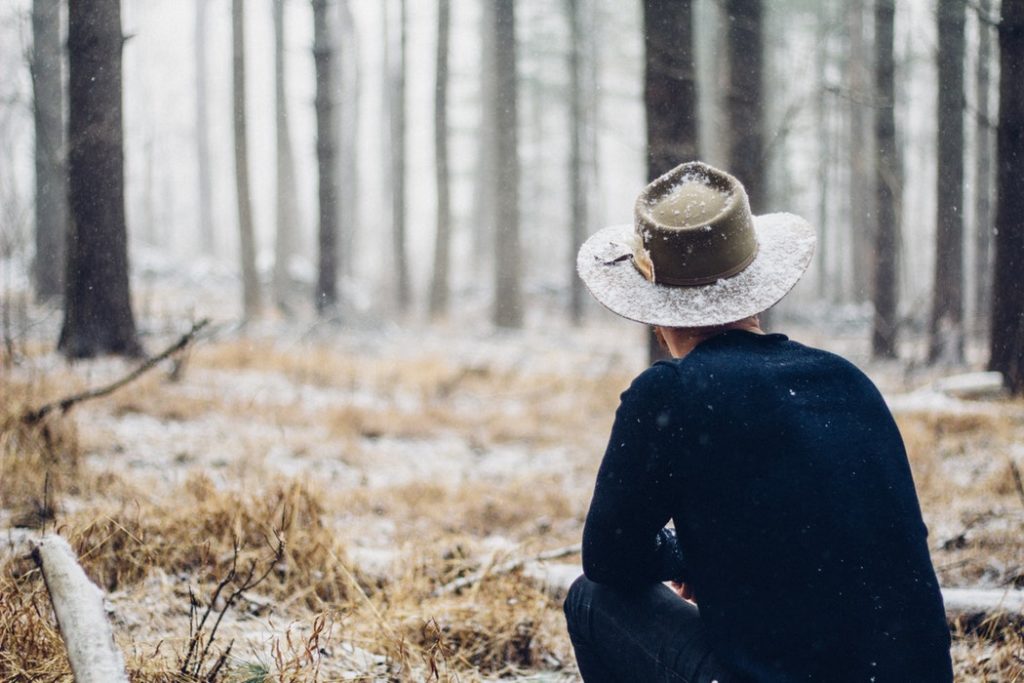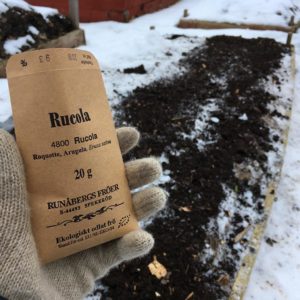News
Sowing Seeds in the Snow

It is March – there is still snow on the ground and the soil is frozen. How can a farmer adapt to this climate and make use of such an environment to fulfill his farming cycle for the year? Grow Gothenburg suggests sowing in the snow, and this tutorial aims to teach you exactly how to do that.
Sara Bäckmo of Skillnadens Trädgård has been an inspiration for this tutorial, and her video Vintersådd av Smörgåsgrönsaker follows a step-by-step regime for sowing during winter. Grow Gothenburg’s Jonathan Naraine has also recently completed his own sowing in snow project with carrots and ruccola, and will complement Sara’s teachings below.
Sow in the Snow?
Yes, you read it correctly – we can actually sow in the snow. Even though the air is cold and the ground might be frozen, we can still practise winter sowing. This way, as soon as the ground is warm enough for the seeds to germinate, they will do so. Sowing seeds a couple of weeks ahead of what you would normally do would ensure a harvest that is a couple of weeks (or even a month) earlier.
Sara Bäckmo advises on choosing the right crops that are tolerant for winter sowing – seeds that tolerate laying passive during the cold winter temperatures and do not grow until the ground warms up. In her video, she uses leafy vegetables that are tolerant to the cold and mature quickly. Tuscan cabbage (also known as “cavolo nero” which can be harvested even as a young leaf), a red-pick salad, spinach, red garden orache, dill and ruccola are some of her choices. It is also important to think about choosing a place to sow with lots of sun and wind protection from the cold northern winds. Lastly, do not forget to roughly calculate the number of seeds you would need for your plot. Each seed packet contains a different number of seeds and knowing how many seeds you need would give you an idea of many packages you need to buy.
How to do it: Step by step
1. Uncover the snow from the bed. If you have prepared the soil by raking it already in autumn so that it is flat and ready for seeding, that is great – otherwise, we advise you to put some extra soil to ensure that the seed sticks.
2. When planting, maximise the number of seeds along a row. This is because when sowing early or late in the season, the plants do not grow that big and so maximising the seeds along a row would mean that many small plants can grow closer to each other along the row and can be easily clipped off during harvest.
3. Cover the seeds with soil. It is equally acceptable to use compost soil from your garden or soil that has been purchased from the store. But the soil you cover with needs to be defrosted, so plan to take some soil into a warmer space in good time before you sow.
4. Gently pat the soil flat.
5. You do not have to cover the soil just yet – we wanvegetablesfor a little snow or rain that will wet the soil and the sown seeds as it gets warmer. If you have lots of snow around you can also cover them with snow, which will provide water as it melts – but Sara lets nature do the job here, waiting for natural snowfall.
6. Once the snow has melted or rain has wet the soil, protect the soil with a plastic or microfiber cloth covering so it creates a warmer microclimate for the plants, thus creating a mini greenhouse.
P.S, If you have dogs or cats that might want to dig at the soil and destroy what you seeded, it can be good to protect the soil with some protective mesh on top of the beds, such as a compost mesh.
For a more in-depth and visual tutorial, watch Sara’s video below:
You can also sow carrots and other root vegetables in this way, which can be a good idea since many vegetables like parsnip take some time to mature. Here is a link to an additional video showing how to sow parsnips in the snow. Jonathan seeded some ruccola on Feb 11th and summer carrots on Feb 18th, and we will update you on how it proceeds.
Good luck! With all fingers crossed, the earliest you can harvest some leaves would be in early April. Snap some photos and tag us on Instagram at #growgbg so we can follow your progress as well. We are constantly on the lookout for contributors and Growers of the Month, but mainly – we just get excited over progress within our Grow community.
Best regards,
Grow Gbg team




